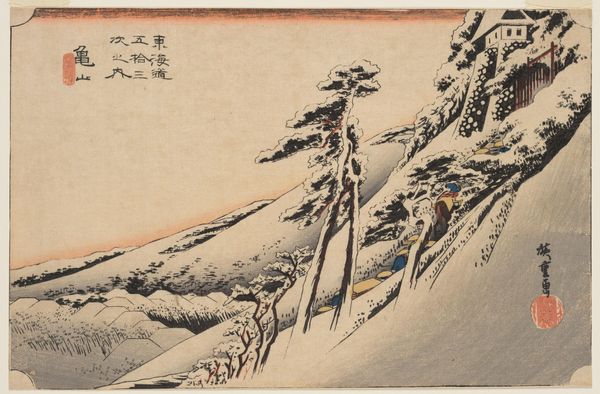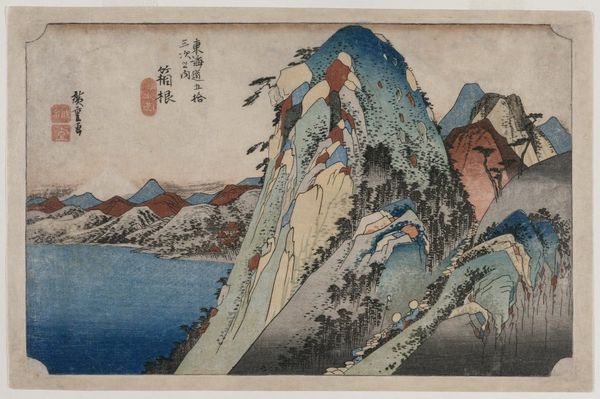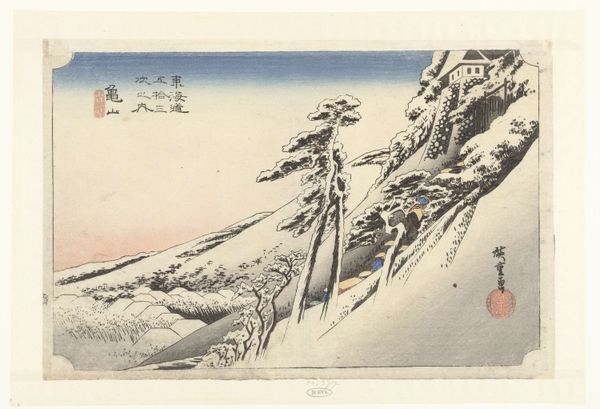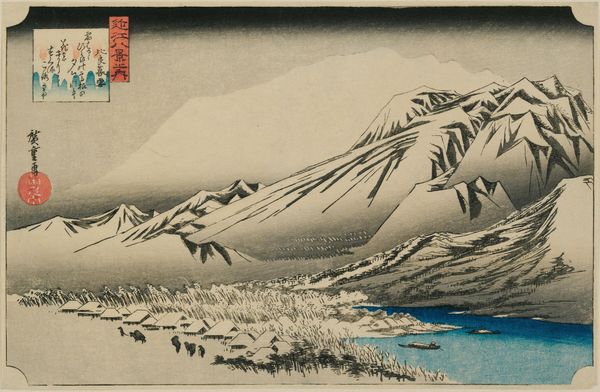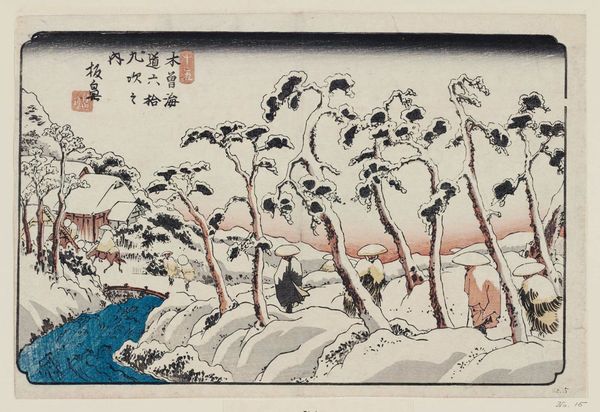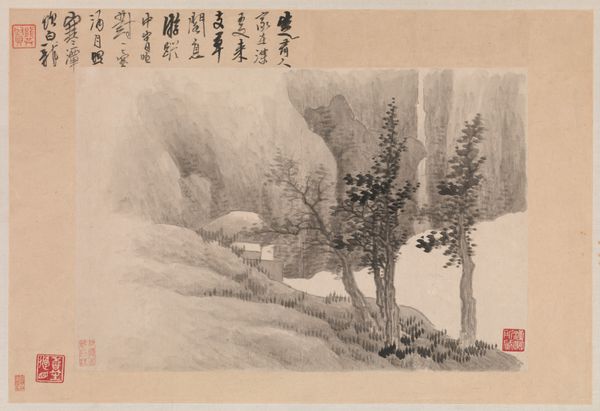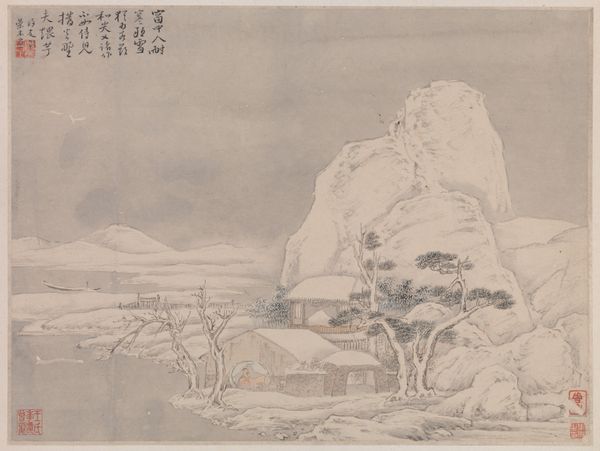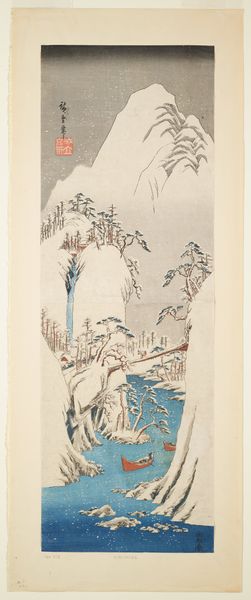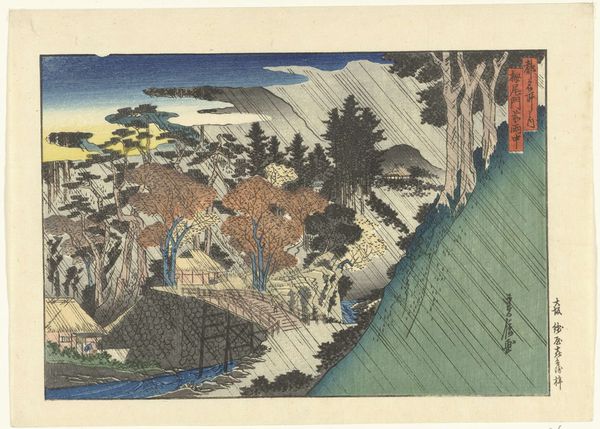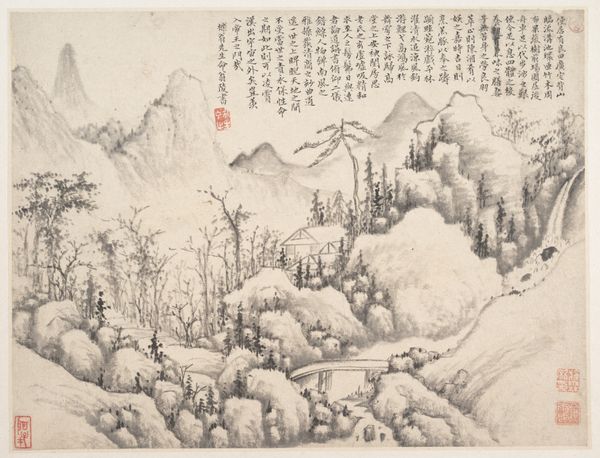
print, ink, woodblock-print
# print
#
landscape
#
ukiyo-e
#
ink
#
woodblock-print
Dimensions: 9 1/2 × 14 1/4 in. (24.13 × 36.2 cm) (sheet, horizontal ōban)
Copyright: Public Domain
Curator: Ah, yes, “Kameyama--Clear Weather after Snow” by Utagawa Hiroshige, created around 1832 or 1833. It’s a woodblock print, part of his famed "Fifty-three Stations of the Tōkaidō" series, currently residing here at the Minneapolis Institute of Art. Editor: The immediate sense is one of stark beauty and quiet endurance. The deep snow softens the landscape, yet the path carved out reveals the labor, the sheer will, required to move through this place. Curator: Precisely. The Tōkaidō was a vital road connecting Edo, modern-day Tokyo, with Kyoto, the imperial capital. Hiroshige masterfully captured not just the scenery but also the lived experience of those traversing it. Note how the people become small figures struggling against a larger landscape, yet actively shaping that landscape. Editor: And those figures really stand out! You see those tiny, determined travelers, each one carrying bundles, perhaps provisions or trade goods? They create a narrative thread winding up that snow-laden hillside, representing movement and connection amidst potentially isolating conditions. There's a tension, though, a vulnerability evident. Curator: That tension underscores the precariousness of travel in the Edo period. The prints like this were marketed to ordinary citizens fueling the tourism. This became part of the boom when society embraced this newfound concept that land and leisure belong to its population. Editor: This piece sparks a question: How do we balance the allure of landscape with its inherent challenges, how the romanticization of travel can eclipse a deeper reckoning of the class system that only made it attainable to the tourist? Hiroshige presents that idyllic image for those looking to break away and escape. It almost acts as social commentary. Curator: I find the way Hiroshige manipulates color incredible in this image; look at the soft gradations in the sky, from that blush of dawn to the crisp blue overhead. Also the contrast from those warm tones peeking beneath the path carved along that snowy embankment and stark white snow. That gives an interesting insight on the atmosphere he might have experienced that morning, too. Editor: The entire color palette communicates that time perfectly. The clear delineation between the areas allows our eyes to be led through the various sections from bottom to top following the road. Overall, this piece makes a lasting statement of labor during this historical boom. Curator: An absolutely enduring example of Hiroshige’s brilliance in encapsulating both natural beauty and everyday life! Editor: Agreed, "Kameyama--Clear Weather after Snow" provides an important focal point for critical engagement as it captures this time and concept, that needs to be presented for this work to carry the important depth that we may otherwise miss!
Comments
No comments
Be the first to comment and join the conversation on the ultimate creative platform.
